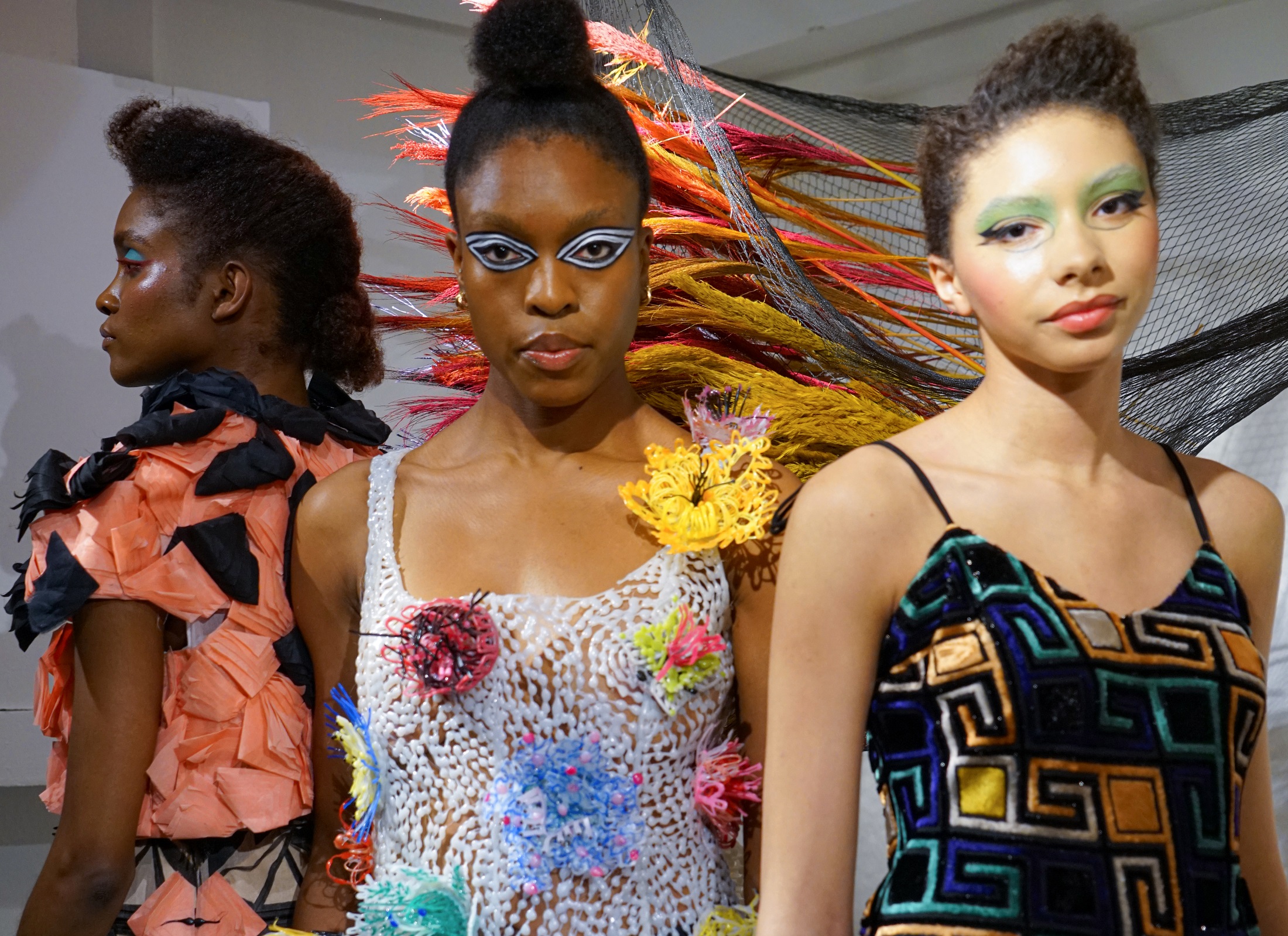By Brian James and Leigh Maynard
In all aspects of life, where some people see challenges, others see opportunity, and while pushing boundaries and taking the path less trodden takes courage, it can also deliver rewards. Nobody exemplifies this more than Karina Bond. The young designer takes the sartorial to new states, redefining sustainability through her experimentation and use of unconventional materials. To Karina, fashion transcends trends; it’s not just fabric; it’s an art form.
At the height of the pandemic that pushed the supply chain and the industry to its limits, Karina’s resourcefulness took her creativity in new directions. When fabric was limited, she looked to the materials surrounding her, utilising what was available. And so, a dress made from paper and matchsticks became a Tik Tok hit. This artful interpretation was part dress, part sculpture resulting from Karina’s rich imagination and resourceful and innovative sensibility.
The affinity with fashion resonated with the Russian designer from an early age. Moving to the U.K. in her formative years, she looked back to the artists of her heritage, many of whom still inform her work. Creatives like illustrator Pavel Orinyansky keep Karina’s creativity rooted in deeper artistic disciplines that differentiate her designs. There’s a romanticism to her pieces underpinned by adept craftsmanship, skills taken from a tutelage on the streets of Saville Row.
This unique blend of accomplished craftsmanship and ingenuity has garnered the young designer recognition from the L’Oreal Professional Young Talent Awards to Lee McQueen’s renowned Sarabande foundation, a creative incubator for artists of all disciplines. We spoke to Karina about her journey into fashion, the ethos that sets her apart from her peers and the artistic sensibilities that drive her distinctive aesthetic.
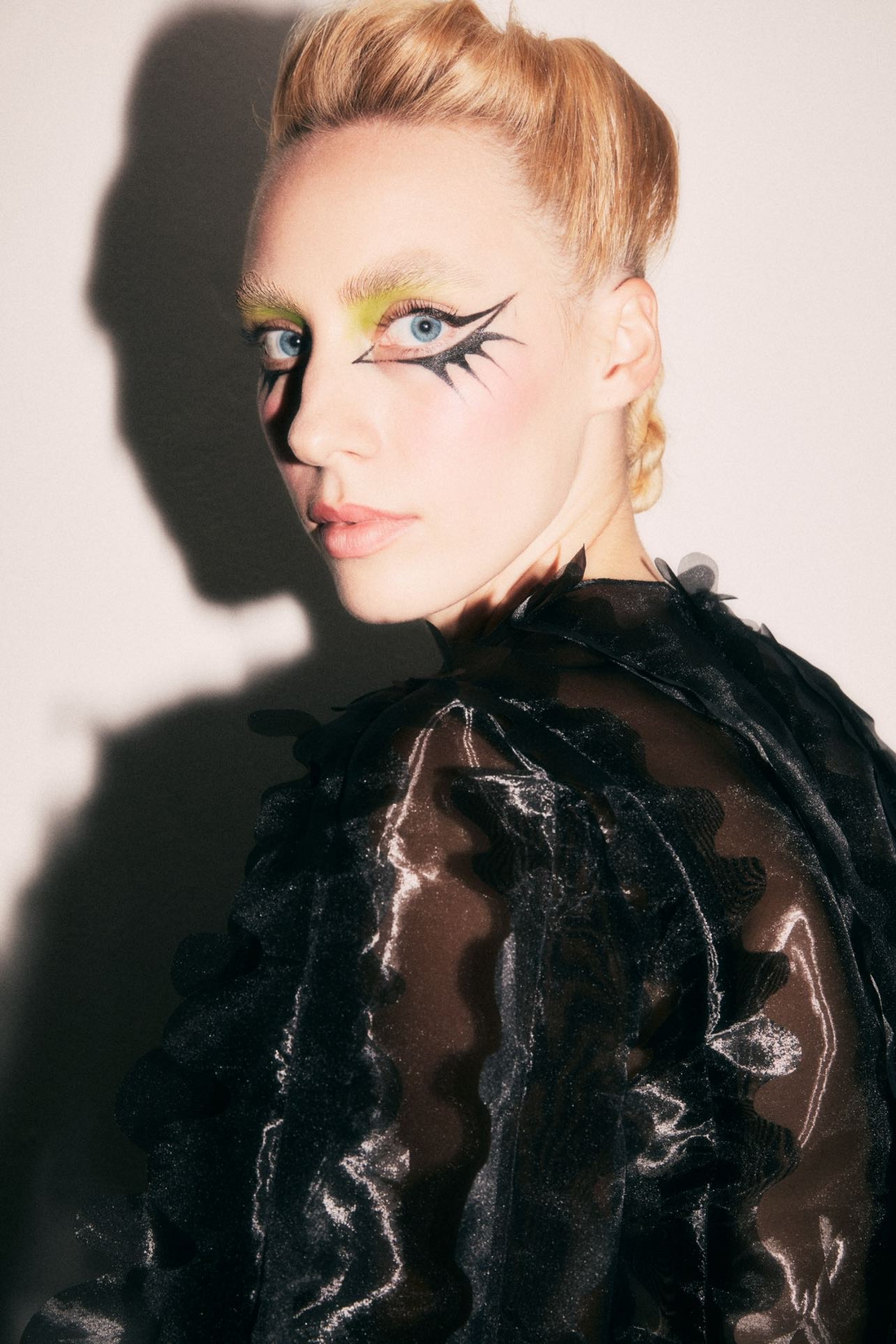
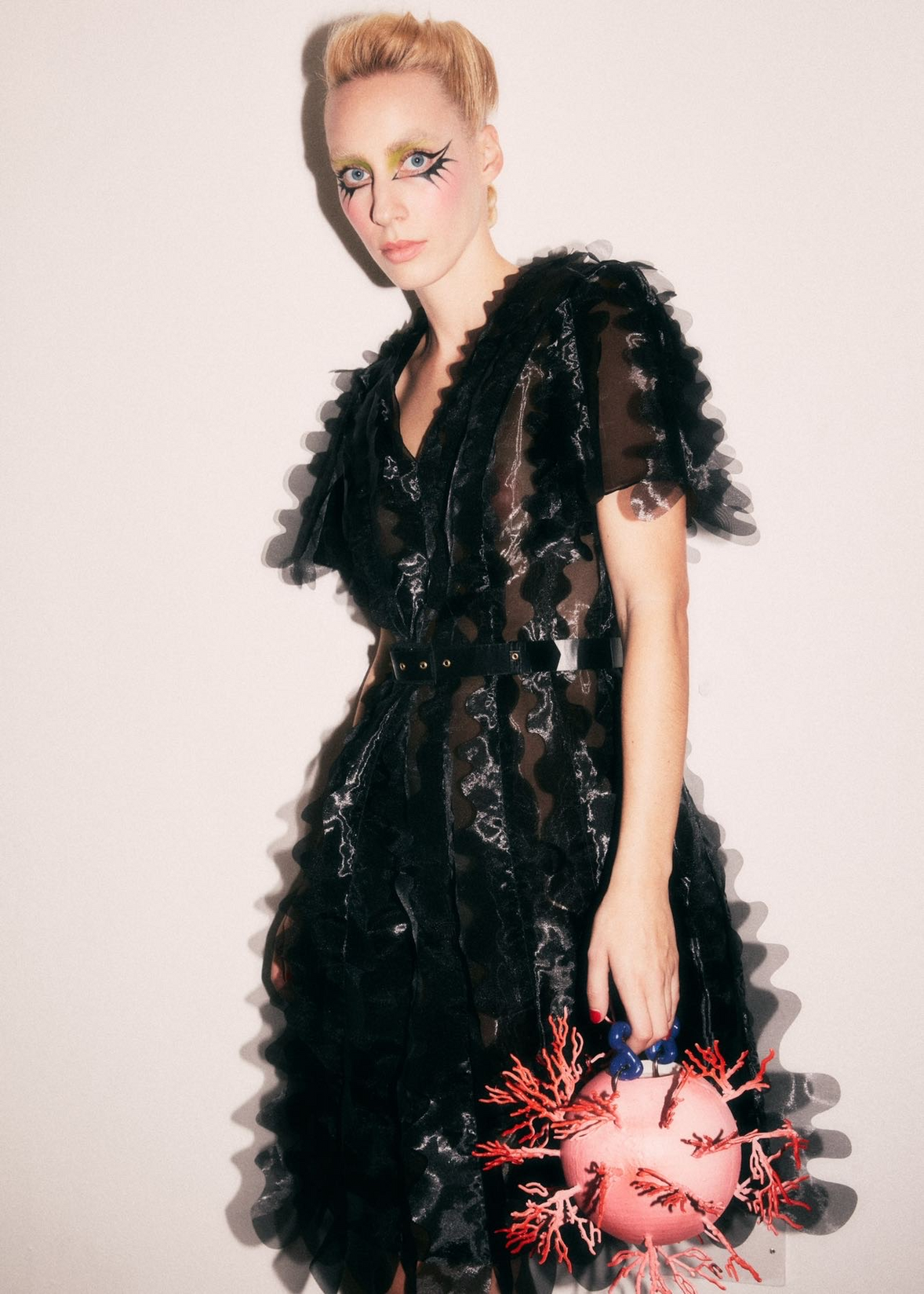
Model: @magdaswider_official
Bag: @natashaannburman
Photography: @jimmyyxk
MUA: @lanslondon
Hair: @jonwilsdon @toniandguyworld
Congratulations on your beautiful SS23 RTW and capsule couture collections. How did you begin your journey into the fashion world, and is there a particular person or designer who inspired you in this direction and why?
I have been drawing dresses ever since I can remember; I just didn’t know that you could do this as a career. It was when I came to England, and my new art teacher told me that if I was interested in fashion, I needed to learn about the designers and what they do and see if that was something I’d want to pursue seriously. I was 11 at the time. She gave me four designers to study: John Galliano, Jean Paul Gaultier, Vivienne Westwood and Zandra Rhodes. These were the first four figures who opened my eyes to this world, and while at that age I did not understand punk fashion or torn-up denim dresses, I was ready to learn everything I could about this industry.
You were born in Moscow and moved to Surrey aged 9. Do you take inspiration from your heritage when you create your collections, and if so, what elements, in particular, infuse your works?
Since moving here, my parents have always continued to teach me about Russian culture, be it literature, music or art. And even though my creative process is fairly chaotic, and I may only sometimes have direct references to a particular source, I am a huge fan of illustrator Pavel Orinyansky. I have also grown up listening to a lot of poetry which my grandad or mum would read to me, in particular by Pushkin and Mayakovsky. My work also has very romantic elements, and I am a lover of Aestheticism, Oscar Wilde and Aubrey Beardsley.
There is solid attention to craftsmanship at the focal point of your designs; this comes from your internship at Savile Row, where you worked under renowned head cutter David Taub. What lessons have you learned from this bespoke tailoring and classic craftsmanship you have taken with you in your work?
Davide is one of those amazing people who teach without trying to teach. He also never associated himself with the fashion industry. So it was a real breath of fresh air to step away from the same mentality I’ve been around for years and dive into the century-old workshop, where McQueen spent time learning and witnessing skills I had never seen before. One of the best lessons I learnt was that the fit of a garment is more important than design. At CSM, we’re taught mostly how to design, and honestly, the making part is left to the day before the crit.
On Savile Row, I learnt how the cloth (they don’t call it fabric!) is moulded around the body for maximum comfort and longevity. That even the pattern is fit to the customer, if one of the shoulders is lower, that goes into the pattern. If an arm is shorter, the finished jacket will reflect that. I never looked at fashion design this way, and going forward, I spend 20% designing and 80% perfecting the pattern.


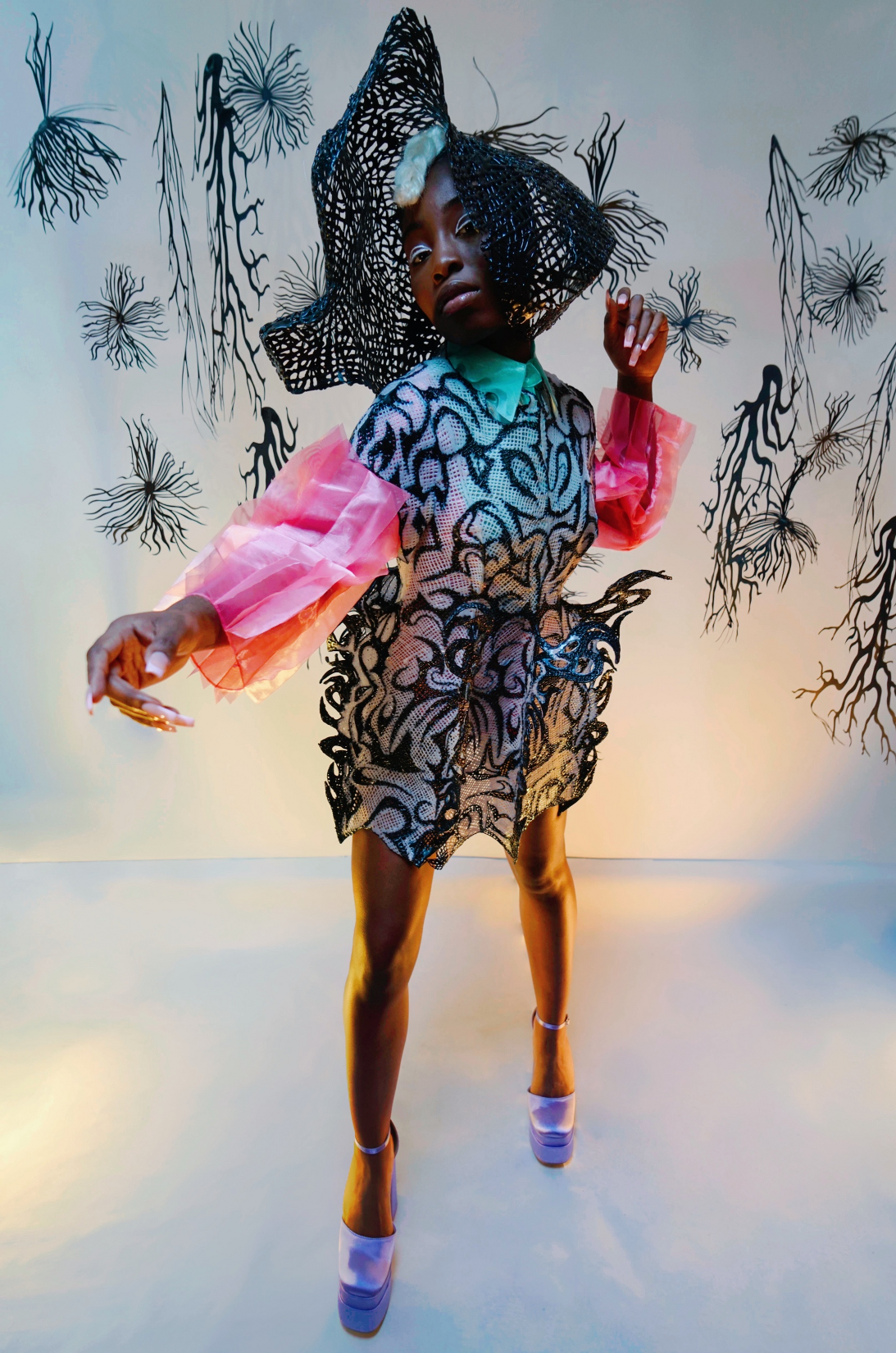
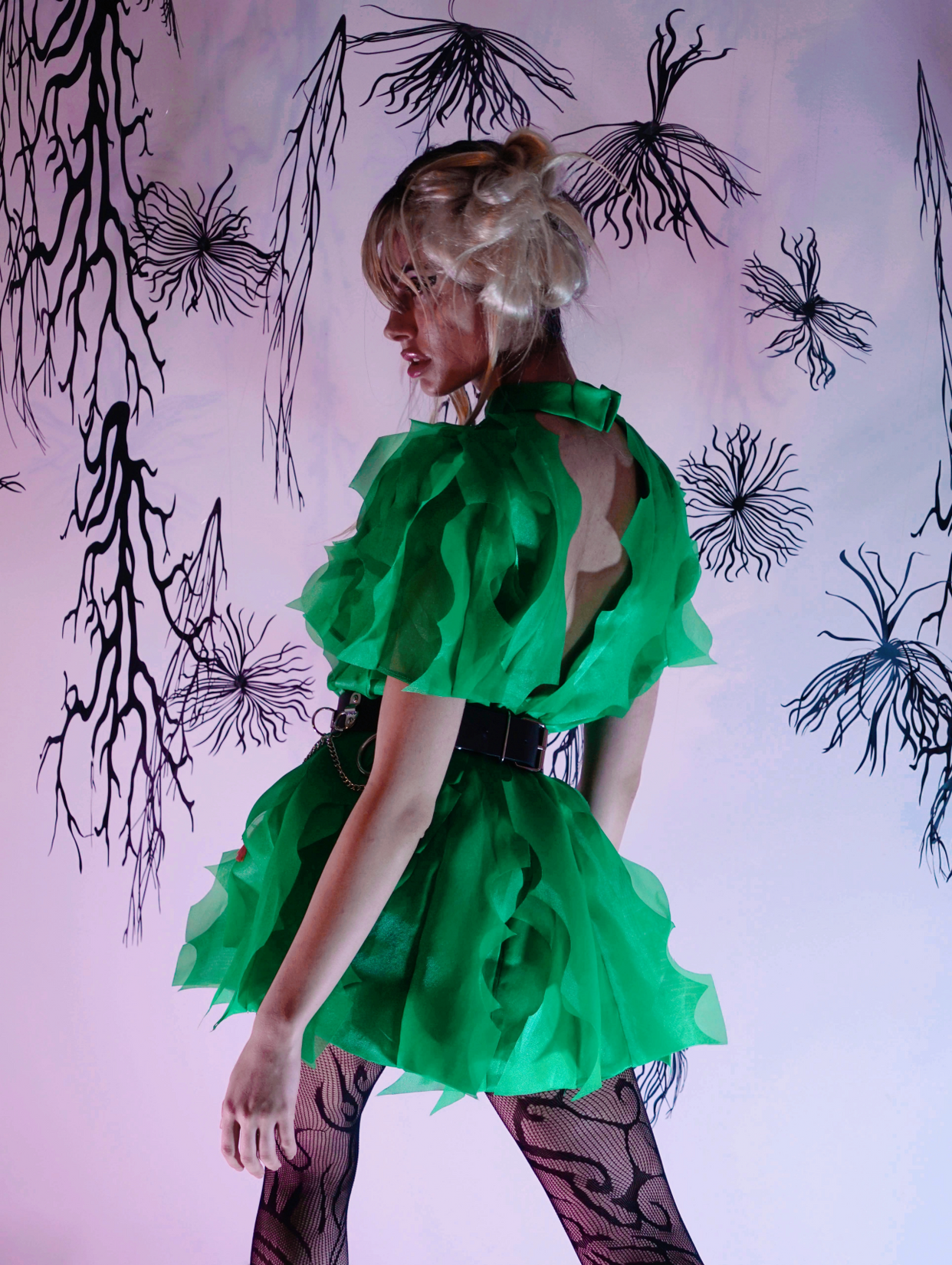
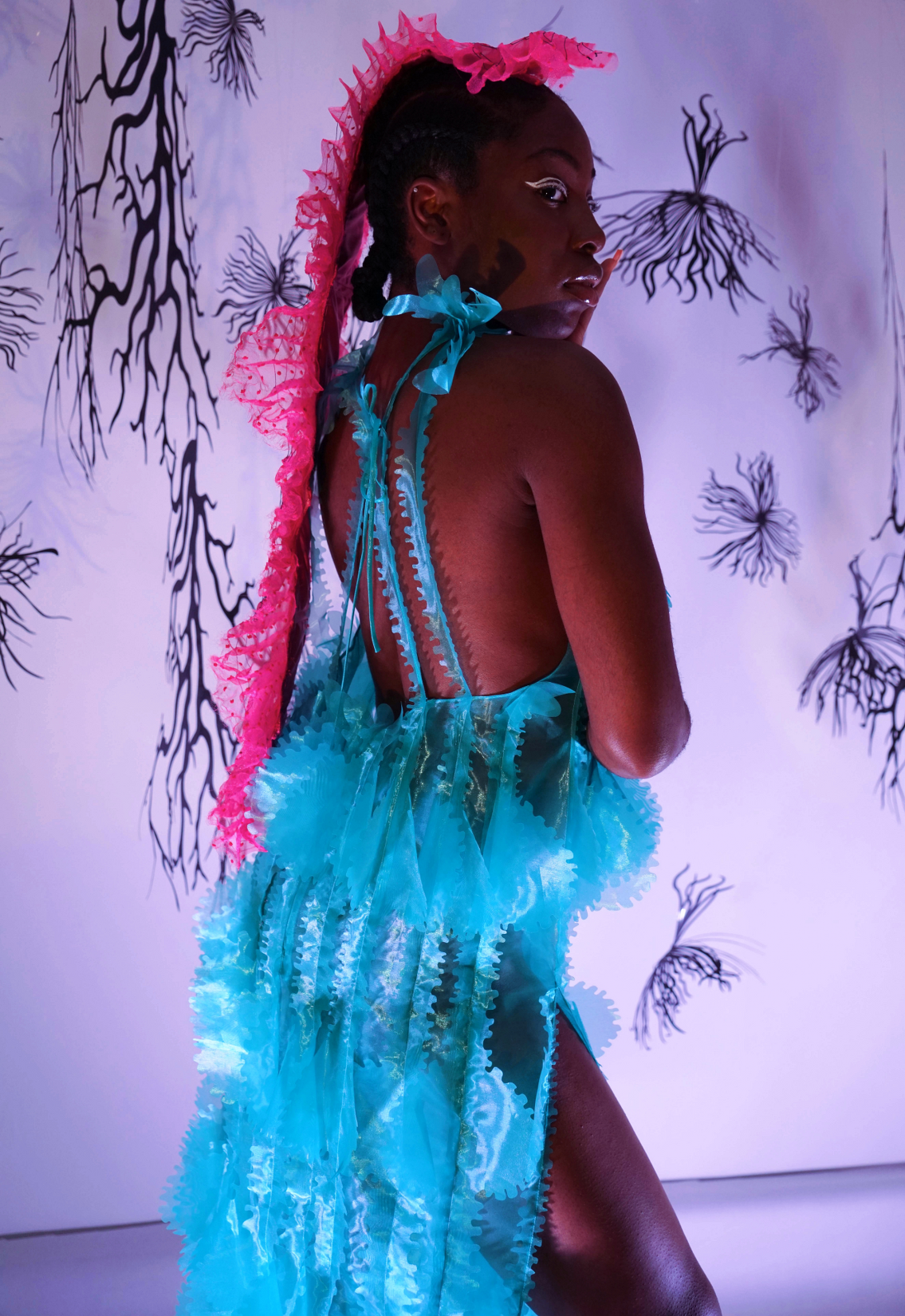
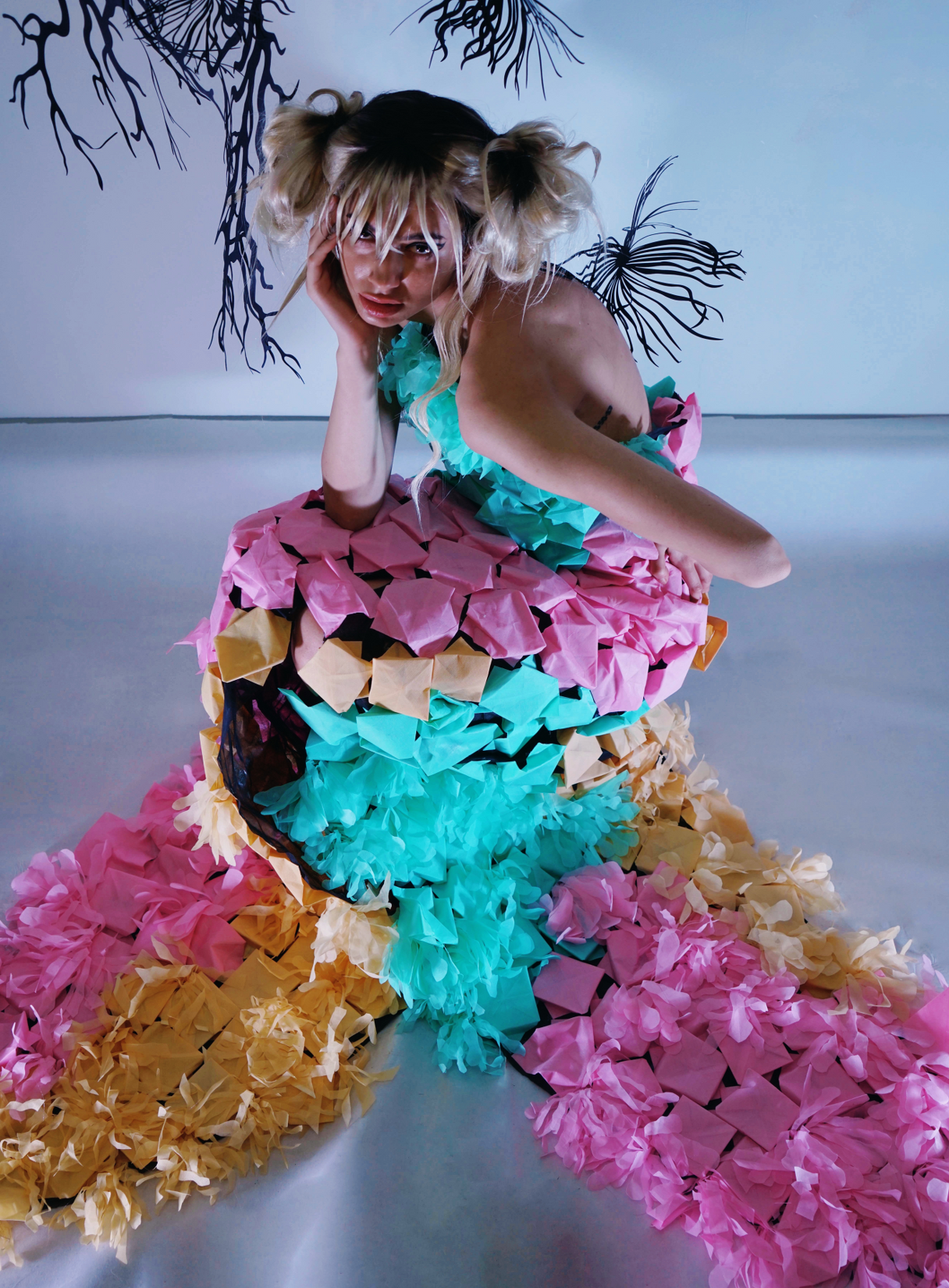
Models: @gabrielahadar @liahldn
Set collaborator and bags: @natashaannburman
HMUA/photography: own @thisisbykarina
Your designs have a very sculptural element; where does this particular aesthetic come from, and are there any artists who have inspired this?
A year before I left school, our textiles department was removed, and I had to transfer to Fine Art. During that time, I had to learn sculpture and painting, and I also started getting interested in stop-motion animation. When I left to do an art foundation, I was so involved in these different pathways I even applied to do Fine Art as a degree. After a term at Newcastle University, the day before I left for Christmas, I had a dream that I was with Anna Wintour styling a model, and in that dream, she asked me why I was not doing fashion design when that was my real calling. I swear that’s exactly what happened, and I’ll never forget it because the day I came back home, I applied for the fashion course at CSM and never looked back. However, being in the art world for a year and a half meant that I approached fashion design in a different light. I’d see clothes as sculptures around the body, and even in my fashion portfolio, I remember making a balloon cape which went around a dress made from thousands of sharp, painted toothpicks. From that time, my favourite artists are Egon Schiele, Anish Kapoor and Raqib Shaw, who is less well known, but he does these intricate enamel paintings that look like a fever dream!
You created a dress for the Met Gala challenge during the pandemic. It featured your interpretation of Cardi B’s Thom Browne dress, which went viral on Tik Tok. This design came from a lack of fabric during the pandemic. Has this way of working informed your creative process and changed your thinking about clothes design?
When making my experimental designs, I sometimes just get bored of using fabric. I like to play with other materials because I don’t see a difference in a dress out of glue or a traditional silk bias cut number – it’s all fashion to me. Paper gives you these crisp shapes that fabric can’t. Using glue to hand-drawn the textiles allows for complete freedom of creation. It’s very liberating. Fabric has lots of limits.
This season, you presented your debut RTW collection alongside designs, such as the glue-gun dress, that are part of your capsule couture collection. Do you see yourself drawn to one style of design, and does one inform the process of the other?
I rarely have a mood board with a strict colour palette and a lineup of designs. I work piece by piece, and one week I’ll be doing RTW, and the next, I might make a couture piece, but the process is very much intertwined. I also love to switch between different styles. I love learning about new techniques, and each new collection is honestly a surprise to me, but that’s what keeps me excited!
You have said you wish you could go back to being younger when you just saw clothes as works of beautiful art instead of something darker and more dystopian. With this in mind, what is the key to striking a balance between creativity and viability as a brand?
I just feel like nowadays, there is unhealthy competition and desperation in the fashion industry to be the most ethical, most sustainable, and most political. And while on the surface, that seems like a good thing, most of the time, that overshadows creativity. When I was younger, I saw fashion as this magical, wearable art, nothing more, and I miss that naive view. So with my brand, of course, I am as conscious as possible, but the focus is on the beauty of the clothes.
As a Sarabande scholar, what lessons have you learned from your mentors at this prestigious foundation?
So many!! The fundamental one is don’t rush to succeed. I had a very successful end to my degree. Many stylists took an interest in my work, including Jason Rembert and journalist Sarah Mower. And I was convinced, with Sarabande also behind me, bish bash bosh here is a new collection, hello Selfridges and Matches buyers, let’s go! But, of course, in reality, everything takes time. I’ve learnt that no matter how much you want it and how hard you work, it is an ongoing game to meet the right buyer at the right time. Or send a lookbook to a stylist for the right event. Patience, remaining confident, and the will to continue developing and improving your work have all been the best lessons.
The SS23 collection is entitled ‘Cocktails in Nautilus’, inspired by the fantasy of a lavish soiree aboard Captain Nemo’s mystical submarine. Why did you choose this particular theme?
My collection was very occasion wear focussed, so I definitely envisioned the presentation of it to be some form of a party. And I had this one image saved of these incredibly intricately illustrated anemones which reminded me of the organza laser cut panelled pieces I had. I also collaborated on the set and bags with my best friend from university, Natasha Burman, and together we came up with the theme of this mystical party under the sea. I also used to snorkel all the time during my summer holidays, so this was quite nostalgic for me.
With your SS23 collections completed and accolades, such as your L’Oreal prize and the Sarabande mentorship, what is next for Karina Bond?
Launch my website, secure stockists and make my pieces available to wear off the runway! Nothing makes me more happy than seeing someone wearing my designs and how they feel in them, and I cannot wait to keep evolving and introducing Karina Bond to all corners of the globe.
——


Models: @kendrakizia @demera.ra and Kaitlyn
Photography: @christineskowron__
MUA: @lanslondon
Hair: @jonwilsdon @toniandguyworld
Set and bags: @natashaannburman
Karina Bond’s journey has taken her from distant lands, following the footsteps of gifted genii like McQueen, who himself created clothes that were more than just fashion; they were works of art. So, it’s easy to see why The Sarabande recognised that innate talent in this gifted young designer.
What strikes us most about Karina is her deep appreciation for her craft, seeing her look past the calculated tactics that so many brands adopt to stand out. Tactics that diminish the authenticity of their designs and ultimately leave them without a distinctive voice. In this sense, Karina focuses on what truly inspires her to create; her love of beautiful narrative and form stays at the forefront of her work. There will always be an element of ethical intentionality to Karina’s design, but as it may be with so many brands, for Karina, it is not cosmetic; it’s fundamental.
Mentors and inspiration come in many forms. Whether from the echoes of a past genius, the etchings of illustrators, or the musings of poets. And for Karina Bond, art and her love of her craft infiltrate all aspects of her work, whether producing RTW or couture; she is the definition of an artist. And like all true artists, she is a pioneer not only in her approach to design and through her innovation with materials but as she explores and redefines sustainable fashion. With each new experimentation, she is carving a path, like those mentors before her, demonstrating what is possible in the name of environmentally credible design.
As Karina pushes her discipline into new directions, her love of art remains at the heart of her ambition. It’s clear that while commercial success is desirable, there are other driving forces. Persian poet Rumi said, let the beauty of what you love be what you do, and those who follow that sentiment make dreams a reality. For Karina, one dream of a fashion editor led her to where she stands today, as a successful and recognised RTW and couture designer. She is art and commerce in its most authentic form; she has followed the guidance and the footsteps of some true geniuses, but she has the talent and the imagination to inspire a new generation in her own right.

